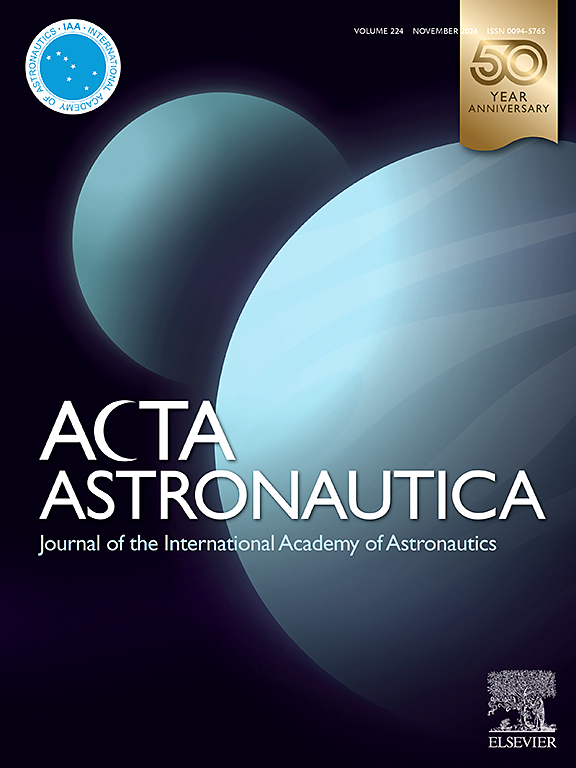Geometric mechanics framework for tethered de-spinning of massive asteroids by small tug using passivity-based control
IF 3.1
2区 物理与天体物理
Q1 ENGINEERING, AEROSPACE
引用次数: 0
Abstract
This paper develops a geometric mechanics framework for de-spinning massive asteroids using miniature tethered tugs during the post-capture phase of asteroid redirection missions. The excessive mass disparity between the asteroids and the tug, combined with weak solar gravity in heliocentric orbits at several astronomical units from the Sun, renders the tug-asteroid system severely ill-conditioned. This condition poses challenges for accurately integrating the de-spinning dynamics numerically over extreme long durations. To address these issues, this paper derives the relative equations of motion of the tug-asteroid system via Hamilton’s principle and Lie group theory within a structure-preserving methodology that incorporates tether libration and asteroid attitude dynamics. The asteroid de-spinning control scheme is synthesized through energy shaping to establish system passivity via tether tension control to ensure bounded stability. A discrete-time Lie group Hamiltonian variational integrator is derived based on the Symplectic Partitioned Runge-Kutta method for high accuracy. The strict asymptotic stability of the proposed passivity-based control is proved theoretically. The framework is applied to de-spin asteroids at 1 and 3 astronomical units from the Sun. Numerical results demonstrate enhanced stability over extremely long time integration, which is critical for such missions. Finally, the impact of variations in asteroid’s moment of inertia and initial conditions is analyzed parametrically, revealing that small changes can significantly affect mission duration and the required tether length.
求助全文
约1分钟内获得全文
求助全文
来源期刊

Acta Astronautica
工程技术-工程:宇航
CiteScore
7.20
自引率
22.90%
发文量
599
审稿时长
53 days
期刊介绍:
Acta Astronautica is sponsored by the International Academy of Astronautics. Content is based on original contributions in all fields of basic, engineering, life and social space sciences and of space technology related to:
The peaceful scientific exploration of space,
Its exploitation for human welfare and progress,
Conception, design, development and operation of space-borne and Earth-based systems,
In addition to regular issues, the journal publishes selected proceedings of the annual International Astronautical Congress (IAC), transactions of the IAA and special issues on topics of current interest, such as microgravity, space station technology, geostationary orbits, and space economics. Other subject areas include satellite technology, space transportation and communications, space energy, power and propulsion, astrodynamics, extraterrestrial intelligence and Earth observations.
 求助内容:
求助内容: 应助结果提醒方式:
应助结果提醒方式:


